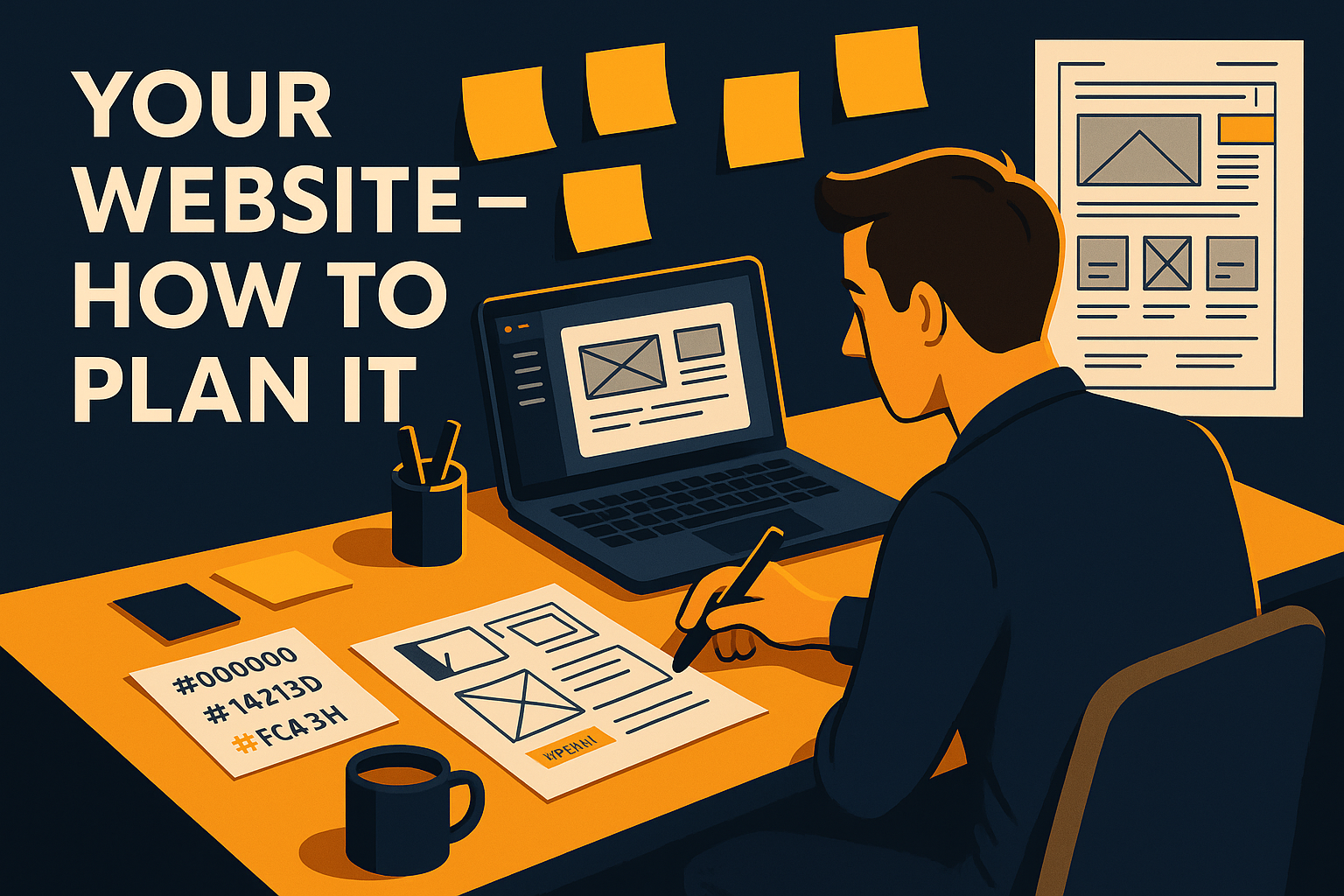
Your Website: How to Plan It Right (Before You Even Design It)
Published: Jun 2, 2025
If you're starting a new website project — whether it's for yourself or a client — the biggest mistake you can make is opening Figma or writing code too early. A beautiful layout means nothing if the structure and purpose of the website haven't been thought through.
In this post, you'll learn how to properly plan a website structure and content from scratch. We'll walk through the exact steps I take when working with businesses. Then, we'll apply it in practice by planning a site for a fictional business coach.
Why Planning Comes Before Design
Great websites convert. They turn visitors into leads, leads into clients. And that only happens when a website is:
- Clear about what it's offering
- Speaking directly to its audience
- Structured in a way that guides the user to take action
Planning the structure before design ensures:
- You're not guessing what goes on the page
- The copywriting aligns with your business goals
- Your layout supports the journey you want the user to take
Step 1: Define the Purpose of the Website
Ask yourself: What is the primary goal of this website?
Examples:
- Book 1:1 coaching calls
- Sell digital courses
- Capture email subscribers
- Build authority as a thought leader
Every section you add should support this one core goal.
Step 2: Know Your Audience
You need to know who you're talking to:
- Are they beginners or experienced?
- What are they struggling with?
- What kind of tone, visuals, and language speaks to them?
Tip: Create a short "client avatar". Give them a name. Write down their problems, desires, and hesitations.
Step 3: Map Out the Website Pages
Your site should be as simple as possible while still achieving your goal. Most businesses don’t need 20 pages.
Common page structure:
- Home
- About
- Services / Programs
- How It Works
- Blog / Resources
- Contact
For single-page sites, you can include these as sections instead of full pages.
Step 4: Plan the Structure of Each Page
Let’s take the homepage as an example. Here's a structure that works:
- Hero Section
Clear headline, subheadline, CTA - About / Credibility
Short intro, friendly portrait, short story - Services / Offers
Key programs with brief descriptions and CTA - Why You?
Testimonials, results, or differentiators - How It Works
A simple step-by-step breakdown of your process - Final CTA
Reassurance and strong invitation to take action
Step 5: Write Content Blocks First
Before you design, write draft content for each section:
- Write headlines that are clear, not clever
- Keep paragraphs short and conversational
- Focus on benefits, not features
Design should enhance content — not make up for the lack of it.
Step 6: Apply This in Practice — Example: Business Coach Website
Goal:
Help a business coach attract clients for 1:1 and group coaching offers.
Ideal Client:
Female entrepreneurs in early stages of building their business, aged 28-45, seeking guidance and structure.
Planned Structure:
Home Page Sections:
- Hero Section: "Let’s grow your business from the inside out"
- About: Friendly photo + "Why I do this" paragraph
- Coaching Services: 1:1 Coaching, Group Programs, Business Strategy Intensives
- Social Proof: Logos of brands (real or fictional), testimonials
- How It Works: Simple 3-step process
- Final CTA: "Book a free 15-minute discovery call"
Pages:
- Home
- About
- Services (can be split into subpages for SEO later)
- Blog
- Contact
Sample Hero Copy:
"Grow your business with clarity and confidence. I help early-stage entrepreneurs turn vision into strategy through personalized coaching."
Final Thoughts
Planning your website before design isn’t a luxury — it's essential. Think of it like building a house. Would you ever design the kitchen before knowing how many bedrooms or bathrooms you need?
Follow my Instagram so you can see this process in real life.
